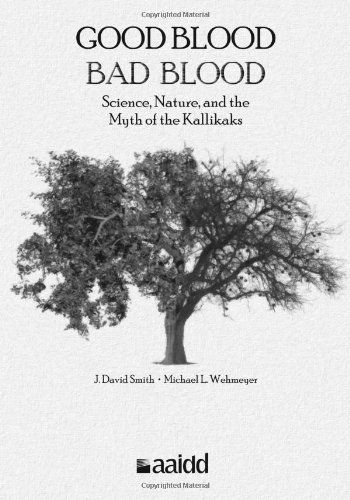
Good Blood, Bad Blood Science, Nature, and the Myth of the Kallikaks
At the vortex of the American eugenics tragedy was the seemingly sordid tale of a "degenerate" family from rural New Jersey.Published in 1912, The Kallikak Family was a pseudoscientific treatise describing generations of illiterate, poor, and purportedly immoral Kallikak family members who were chronically unemployed, "feebleminded," criminal, and, in general, perceived asthreats to "racial hygiene." Psychologist Henry Herbert Goddard invented the pseudonym "Kallikak"-from the Greek words Kallos (beauty) and Kakos (bad)-to illustrate the eugenic belief in the role of nature and heredity as unalterable forces leading to degeneracy, and his tale of the contrasting fates of the disparate Kallikak ancestral lines reigned for decades as seemingly conclusive proof of the hereditary nature of intelligence, feeblemindedness, criminal behavior, and degeneracy. The starting point for Goddard's moral tale was "Deborah Kallikak," an inmate at his institution for the feebleminded. Incredibly, as revealed in detail for the first time in Good Blood, Bad Blood: Science, Nature, and the Myth of the Kallikaks, Goddard was completely wrong. No degenerate line descended from the purported Kallikak progenitor. There were only people-some of whom had resources and access to education, others of whom were poor, uneducated, and cast into the cauldron that was urban America at the dawn of the Industrial Age. The pseudonymous "Deborah Kallikak" became the poster child for societal fears regarding immigration, heredity, and racial integration, the flames of which were fanned by a select group of well-educated, upper class, American scientists marching under the banner of the new "science" of eugenics. In the 100 years since publication of The Kallikak Family, the woman Goddard called "Deborah" has remained in the shadows of history, known only by the name forced upon her. Using new source material, Good Blood, Bad Blood tells her story in its entirety-in dram